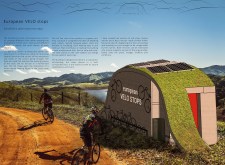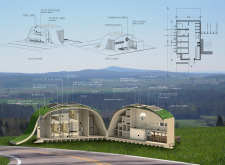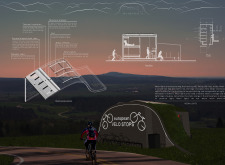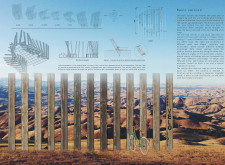5 key facts about this project
The design emphasizes a sustainable approach, utilizing materials and construction methods that minimize environmental impact. By integrating a green roof, energy-efficient systems, and natural materials, the VELO Stops are positioned as a model for future infrastructure projects aimed at supporting cycling culture.
Unique Design Approaches
The VELO Stops feature an innovative hill-like roof structure that not only enhances the building's aesthetic value but also serves practical functions. This design allows for effective rainwater management while providing insulation. The green roof further encourages biodiversity, blending the building into its natural surroundings.
Inside, the project offers sleeping capsules equipped with modern amenities, demonstrating a user-centric approach. Spaces are designed to be adaptable and welcoming, featuring natural wood finishes that create a warm atmosphere. Facilities such as showers, communal kitchens, and bike repair stands support the needs of cyclists, ensuring the VELO Stops are not just functional but also pleasant spaces in which to rest.
Material Selection and Sustainability
Sustainability is a key focus in the VELO Stops' construction. The use of wooden slabs for the interior provides a durable yet environmentally friendly option. Steel tubes contribute to the structural integrity of the building while allowing for aesthetic versatility. Solar panels augment the building’s energy needs, striving for self-sufficiency.
The overall architectural design promotes both comfort and ecological harmony. By prioritizing renewable energy and natural resources, the VELO Stops present an architectural solution that addresses modern needs for efficiency and sustainability.
For more information about the architectural plans, sections, and specific design elements, readers are encouraged to explore the full project presentation. This exploration will provide deeper insights into the architectural ideas and tangible outcomes of the VELO Stops project.


























